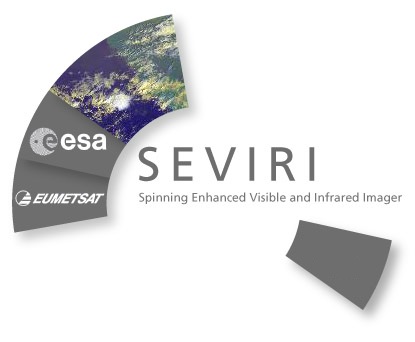
SEVIRI

SEVIRI observes the Earth with improved performance compared to its Meteosat predecessors, is particularly beneficial the meteorological "nowcasters" and remote sensing of atmospheric processes. The design incorporates many new features, which provide state-of-the-art pointing accuracy and simultaneous precise multi-spectral radiometry, geared to fulfil the demanding MSG mission objectives.
Objectives
Data provided by SEVIRI is used in numerical weather forecasting models and in atmospheric and environmental research. Many necessary parameters to understand our environment can be seen: the temperature of the surface and atmosphere, atmospheric water vapour content, cloud formations, storms, hurricanes, heavy rain and fog.
Instrument
SEVIRI has significantly enhanced technical capabilities:
- It produces images of the Earth every 15 minutes
- It offers the nadir geometric resolution up to 1 km
- It provides data in 12 different wavelengths within the visible to infra-red spectrum
Technically, SEVIRI is a light-weight and compact telescope and scan assembly plus a complex focal plane. The scan assembly itself consists of an additional movable mirror which is positioned in front of the telescope; it performs a linear scan of the Earth's surface from south to north. The telescope sends the collected radiation to the focal plane where it is divided into twelve different channels of the electromagnetic spectrum and transferred to 42 sensors. The sensors transmit the recorded data to the Functional Control Unit (FCU), the interface to the data transmission system of the MSG satellite. Thus, a new multispectral satellite image is produced every 15 minutes.
Data Access
Data access to level 1.5 and level 2 MSG data and products via Eumetsat.
DLR archives full disk SEVIRI HRIT level 1.5 data in its DIMS facility.
DLR processes cloud products, total water vapour column and snow cover from SEVIRI.
Cloud product quicklooks can be found here.
Access to cloud data products is on request.
Total water column data and quicklooks can be found here.
Snow cover data and quicklooks can be found here.
The MSG Platform
The Meteosat Second Generation (MSG) has been established in cooperation between EUMETSAT and ESA. Designed in response to requirements addressed by users of EUMETSAT Member States, it serves the needs of Nowcasting applications and Numerical Weather Prediction in addition to providing important data for climate monitoring and research.
Links
Contact
For questions and more information please contact the SEVIRI team at DLR